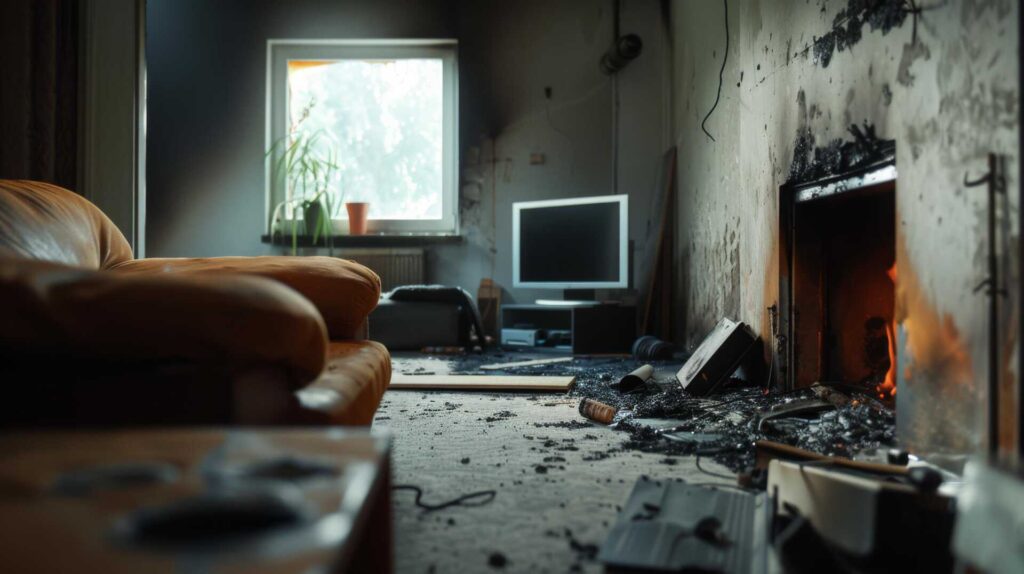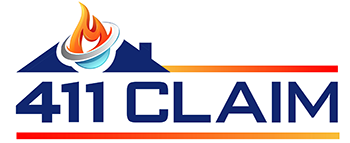
Contents
Understanding what factors influence these prices is essential for anyone facing the aftermath of a fire. From the extent of the damage to local labor rates, each element plays a significant role in the overall expense. Let’s explore how you can navigate these costs and what steps you can take to ensure a more manageable recovery process.
Key Takeaways
- Emergency response speed and severity of damage significantly impact the overall restoration timeline and related expenses.
- Insurance coverage and deductibles can greatly influence out-of-pocket costs; reviewing policies helps in navigating claims effectively.
- Hidden costs may arise during restoration, so being aware of potential expenses aids in budget management.
- Comparing multiple quotes and considering DIY options can lead to more cost-effective restoration solutions.
Factors Influencing Fire Damage Restoration Costs
When a fire strikes, understanding the factors influencing restoration costs can help you navigate the recovery process more effectively. Key elements include the extent of damage, the type of materials affected, and your home’s layout.
The restoration timeline can greatly impact costs, as longer timelines often lead to higher expenses. You’ll also need to take into account equipment rentals, which can vary based on the tools required for effective restoration. For instance, specialized equipment for smoke removal or water extraction may be necessary, driving up rental costs.
Additionally, local labor rates play an essential role in determining overall expenses. Engaging with a reliable restoration service can help you assess these factors, offering a clearer picture of what to expect financially.
Typical Price Ranges for Fire Damage Services
Fire damage restoration services typically range from $2,000 to $30,000 or more, depending on various factors. The extent of the fire damage plays an essential role in determining costs. If your property only needs minor repairs, you might be on the lower end of the spectrum.
However, significant fire damage that requires thorough restoration techniques, such as structural repairs, smoke removal, and odor elimination, will likely lead to higher expenses.
Additionally, the size of your property and the materials affected can influence pricing. Many companies offer free assessments, helping you understand what needs to be done.
While it’s easy to feel overwhelmed, knowing these costs can help you prepare financially. Remember, investing in professional restoration services restores your home and ensures your safety and comfort.
You’re not alone in this; many have faced similar challenges and emerged stronger.
Breakdown of Restoration Service Charges
Understanding the breakdown of restoration service charges is essential for you as a homeowner facing fire damage.
Various factors, such as the extent of damage and the materials involved, can greatly influence costs.
Additionally, knowing typical pricing structures and how your insurance coverage can affect your expenses will empower you to make informed decisions during this challenging time.
Factors Influencing Costs
As you navigate the aftermath of a fire, recognizing the factors that influence restoration costs can help you make informed decisions.
Several elements contribute to the overall expense, including:
Emergency Response: The speed and efficiency of the response team can greatly impact the restoration timeline, affecting costs based on urgency.
Extent of Damage: The severity of the fire, including damage to structures and contents, determines the amount of work needed, influencing the final price.
Location and Accessibility: Where your property is situated and its accessibility can affect labor costs and the overall restoration process.
Understanding these factors allows you to prepare for the financial implications of restoration, ensuring you’re supported through this challenging time.
Typical Pricing Structures
While steering through the restoration process, it’s essential to be aware of typical pricing structures that dictate service charges.
Restoration companies often use various pricing strategies, which can range from hourly rates to fixed fees based on the extent of damage.
You’ll find that service comparisons reveal significant variations in costs, influenced by factors like the type of fire and the materials involved.
Some companies charge for initial assessments separately, while others include it in their overall pricing.
Understanding these structures helps you make informed decisions, ensuring you’re choosing a service that fits your budget and one that provides the compassion and support you need during this challenging time.
Insurance Coverage Implications
How does your insurance coverage impact the costs of fire damage restoration? Understanding your insurance policy is essential, as it dictates what expenses you can claim.
Here are three key factors to take into account:
Coverage Limits: Your policy may have a maximum payout, which can affect how much you’ll receive for restoration.
Coverage Exclusions: Be aware of what’s not covered, like specific types of damage or items, which could leave you with unexpected costs.
Deductibles: These are amounts you’ll need to pay before your insurance kicks in, impacting your overall financial responsibility.
Navigating these aspects can feel overwhelming, but knowing your coverage helps you plan effectively and minimize financial strain during this challenging time.
Insurance Coverage and Fire Damage Restoration
When dealing with fire damage restoration, understanding your insurance policy coverage limits is essential.
You’ll need to navigate the claims process efficiently to ensure you’re adequately compensated for the damages.
Knowing what your policy covers can greatly impact your financial recovery and peace of mind during this challenging time.
Policy Coverage Limits
Understanding policy coverage limits is crucial for homeowners facing fire damage restoration, as these limits dictate how much financial support you’ll receive from your insurance company.
It’s important to be aware of the following aspects:
Coverage Limits: Know the maximum amount your policy covers for fire damage restoration.
Policy Exclusions: Familiarize yourself with what’s not covered, as certain damages may fall outside your policy’s scope.
Additional Coverage Options: Consider whether you need to purchase extra coverage to fill any gaps in your existing policy.
Being informed about these factors helps you navigate the restoration process with confidence, ensuring you receive the support you need to rebuild your home and life after a fire.
Claims Process Steps
After familiarizing yourself with your policy coverage limits, the next step is maneuvering the claims process for fire damage restoration.
Start by gathering all necessary claims documentation, including photos of the damage, receipts for repairs, and any relevant correspondence with contractors. This documentation will be essential for your claim submission.
Once you’ve compiled everything, contact your insurance company to initiate the claims process. They’ll guide you through the specific steps and may assign an adjuster to assess the damage.
Be prepared to answer questions and provide additional information as needed. Remember, you’re not alone in this; many have navigated similar situations, and support is available to help you through each step of the process.
Additional Costs to Consider in Fire Restoration
While you may focus on the primary costs of fire damage restoration, several additional expenses can arise unexpectedly.
These hidden costs can greatly impact your budget, especially when you’re already dealing with the emotional strain of recovery.
Here are a few considerations to keep in mind:
Emergency Services: If you require urgent assistance, costs can escalate quickly. Emergency board-up, water extraction, or specialized cleaning often come with a premium.
Content Restoration: Salvaging personal belongings may involve professional cleaning, repair, and storage fees, adding to your overall expenses.
Building Permit Fees: Depending on your local regulations, you might need permits for repairs, which can incur additional costs you hadn’t anticipated.
Understanding these potential expenses can help you prepare and navigate the restoration process more smoothly, ensuring you’re not caught off guard during this challenging time.
Tips for Reducing Fire Damage Restoration Expenses
Facing the aftermath of a fire can be overwhelming, and keeping costs under control is often a top priority. To reduce fire damage restoration expenses, consider implementing preventive measures before a disaster strikes. Regularly inspect electrical systems and appliances, and install smoke detectors to minimize risks.
When the unexpected happens, act quickly to mitigate damage. The sooner you contact a restoration service, the more cost-effective solutions may be available. You might also want to get multiple quotes to ensure you’re getting the best deal.
Additionally, consider salvaging items yourself where it’s safe to do so, which can greatly lower labor costs. Collaborate with your insurance provider to understand coverage options, ensuring you maximize your benefits.
Recap
In the whirlwind of fire damage restoration, costs can skyrocket faster than a blaze can spread! By grasping the factors at play and knowing what to expect, you can navigate this complex landscape with confidence. Remember, with a bit of strategic planning and timely action, you can tame those expenses. Don’t let fire damage overwhelm you—take charge and ensure a smoother, more affordable recovery process. Your peace of mind is worth its weight in gold!
Recent Posts
Pricing Insights for Damage Restoration Services
When unexpected events disrupt your life, steering through the costs of damage restoration can feel
Budgeting for Blaze Cleanup: A Trusty Guide
Budgeting for blaze cleanup is like steering through a maze—complex and overwhelming but attainable with
Top Storm Damage Repair Techniques for Homeowners
When storms release their fury, the aftermath of storm damage can feel overwhelming, much like
